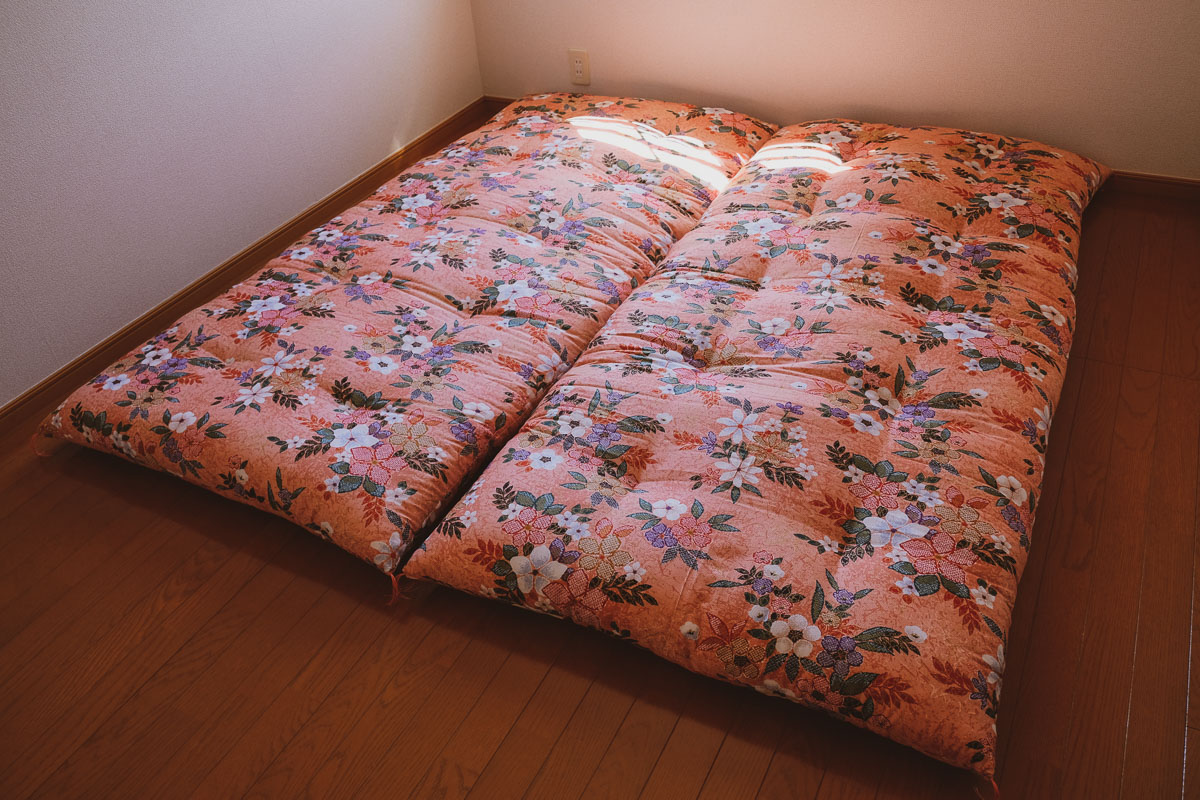I’d always dreamed of sleeping on a traditional Japanese futon—not the Western-style sofa bed, but the real deal: a thick, cloud-like duvet sandwich laid directly on the floor. The first time I stayed at a ryokan (traditional inn) and sank into the blissful comfort of those cotton beds, I vowed to own one myself.
But when I shared my futon aspirations with friends in Japan, I was met with a chorus of warnings. They spoke of moisture problems and the need for regular maintenance, making a Western-style mattress sound much more appealing. And honestly, my mattress back in Canada was excellent. It’s not that I disliked Western mattresses… but I was in Japan! A futon felt like a rite of passage, and I was determined to satisfy my curiosity and learn the art of futon care firsthand. After all, they’ve been used here for centuries.
The Search: Finding the Right Futon
We started our futon search locally but struck out at every turn. Oita City was our next hope. Armed with only online street photos, our weekend trip became a bit of a treasure hunt.
The first address was a false lead—an apartment building, not a shop. The second, however, was a delightful surprise. Hidden in a shopping arcade, it was exactly the traditional futon store we’d been looking for.


The owner patiently presented a rainbow of custom fabrics, and our eyes were instantly drawn to a delicate peach floral print. We ordered two sets, eagerly anticipating their arrival in two weeks.
Two weeks later, the owner himself arrived, carrying our dream futons. We were thrilled!


Maintenance Challenges and Futon Essentials: What You’ll Need
We quickly learned that futons directly on the floor are pretty firm. Coming from a mattress, it was a bit of a shock, especially for Jesse, who likes a firm bed. Padded mats were a game-changer for us, adding much-needed cushioning.



The initial weeks with our futons were blissful. However, we soon discovered that maintaining them required more diligence than we anticipated. I knew weekly airing was crucial, and I tried to be consistent, especially during the humid September weather.
The real test came in November. One rare sunny day, as I aired the futons, I noticed a damp sheen on the floor beneath them. A closer inspection revealed mold forming on the underside of our padded mats. So, we immediately bought slatted platforms to improve airflow. After a week, the futons were noticeably drier.



While not essential, a futon dryer might be a worthwhile addition if you lack outdoor drying space, struggle with wet weather, or prefer the convenience of a machine. These can be found at most hardware stores and offer a reliable way to keep your futon dry and fresh.

Cost Comparison: Futon vs. Western Bed
If you’re weighing the costs of a futon versus a Western-style bed, here’s a breakdown based on our experience (for two people):
- Futons (x2): ¥80,000 (¥40,000 each)
- Sheets (x2 sets): ¥24,000 (¥12,000 per set)
- Padded Mats (x2): ¥14,000 (¥7,000 each)
- Slatted Platforms (x2): ¥22,000 (¥11,000 each)
- Total: ¥140,000
Keep in mind that these are mid-range prices. Western bed costs are highly variable, depending on size, frame, and mattress quality. A quick search on Nitori, a popular Japanese furniture store, reveals double bed frames and mattresses ranging from ¥24,000 to over ¥160,000—and that doesn’t include bedding.
Our Verdict: The Futon Experience
Despite the unexpected challenges and costs, we don’t regret our futons. I love their aesthetic, comfort, and how they transform our bedroom into a personal ryokan. The maintenance is even enjoyable, knowing we’re helping them last.





A dog or two will help absorb the extra moisture.
A great post. Glad you guys are enjoying your ryokan!